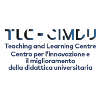Historical Profile
In 1806 Ferdinand III of Bourbon, King of Naples and the Two Sicilies, transformed the Palermo Academy of Studies into a university, granting it the power to bestow degrees in Theology, Medicine, Law, and Arts – a conquest the city had awaited for centuries. The seal on the decree bears the stamp that has become the present-day university’s institutional logo: the Trinacria flanked by Minerva, representing the arts, and by Mercury, representing sciences. But the events that led to the foundation of the university go back much further in time.
In 1550 the Jesuit College was created, which was destined to achieve a role of absolute dominance in the reality of the times. Having constructed with extreme rapidity the imposing Collegio Massimo, now the seat of the Regional Library, which proved to be second only to that in Munich, the Jesuits obtained from the Pope the right to bestow degrees in Philosophy and Theology.
A new page opened on the first of December 1767, when the Jesuits were expelled from the Bourbon Kingdoms of Naples and Sicily and all their goods, including libraries, were confiscated. On 31 July 1778 the King set up a Deputation, which he charged with the task of reorganizing the Study in Palermo. The regulations of the new Academy were characterized by the fact that in addition to the teaching “of words”, the instruction “of things” was introduced, e.g. geometry, economics, agriculture, and commerce. This was the embryo of the future university.
The Academy awarded the “baccalaureate” at the end of two years’ study, the “licence” after the third year, and finally the degree on termination of the course of study, which lasted from three to five years. The Palermo Study achieved a number of successes, including the creation in 1790 of the Botanical Garden and the foundation of an Astronomical Observatory, with the result that Sicily was able to find its place in the circuit of European culture, making marked progress in higher education. The Academy’s first official set of regulations was approved in 1783, when it was allotted its own funds and given full didactic, administrative and disciplinary autonomy.
The constitution in Palermo of a full-scale University was ordained by royal despatch dated 3 November 1805, and the diploma signed by King Ferdinand III of Bourbon, which gave the Academy the title of Royal University of Studies, arrived on 12 January 1806.
UNIPA’s great transformation came in 1860, when Garibaldi arrived on the scene. The present-day non-religious form of University was thus created, thanks to the Pro-Dictator Mordini, who also forged links with the European higher education system – this eventually led to the foundation of the School of Engineers and Architects.
This was the beginning of the process by which UNIPA became what it is today, a mega-university with twelve faculties distributed in various manner throughout the territory, with University Poles in other central-western provinces of Sicily.





























